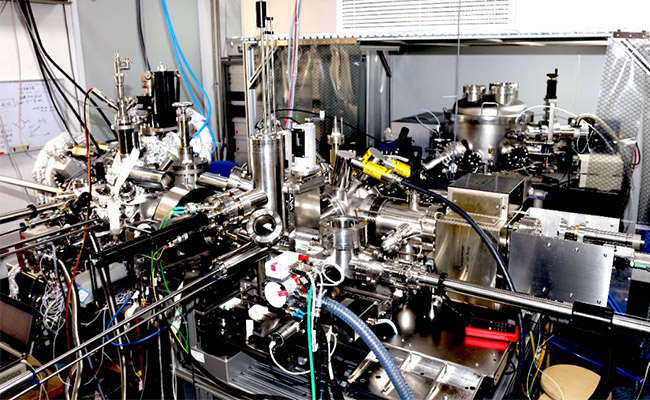
A research group led by Prof. FU Qiang and Prof. BAO Xinhe at the Dalian Institute of Chemical Physics (DICP) of the Chinese Academy of Sciences (CAS) have developed near ambient pressure photoemission electron microscopy (AP-PEEM) with a tunable deep-ultraviolet (DUV) laser source as the excitation source.
They designed and constructed a two-stage accelerating electrical field, a three-stage differential pumping system, and a near ambient pressure sample cell. PEEM imaging was demonstrated on sample surfaces in gaseous atmospheres up to 1 mbar. Spatial resolution reached 30 nm under the near ambient pressure conditions. Moreover, samples could be cooled down to 150 K or heated up to 1000 K when imaging. These performances were all successfully demonstrated in the lab onsite in November 2019.
PEEM is a powerful surface imaging technique for studying dynamic processes on solid surfaces. Nowadays, all PEEM measurements need to be performed under ultra-high vacuum (UHV) conditions, which present a large "pressure gap" compared to real applications.
The newly developed AP-PEEM can work under nearly realistic working conditions, suggesting important applications in heterogeneous catalysis, energy conversion devices, environmental processes, and biological science.
The AP-PEEM is combined with the tunable DUV laser source developed by Technical Institute of Physics and Chemistry of CAS. The entire DUV-AP-PEEM system was developed and installed in the State Key Lab of Catalysis of DICP, requiring more than five years.

Near Ambient Pressure Photoemission Electron Microscopy (AP-PEEM) Based on Tunable Deep-Ultraviolet (DUV) Laser Source Developed. (Image by LIU Wansheng)

86-10-68597521 (day)
86-10-68597289 (night)

52 Sanlihe Rd., Xicheng District,
Beijing, China (100864)

